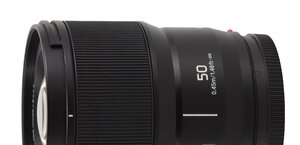Nikon Nikkor AF-S 58 mm f/1.4G
8. Vignetting
The vignetting for the APS-C/DX sensor can be assessed while glancing at thumbnails below.

Please Support UsIf you enjoy our reviews and articles, and you want us to continue our work please, support our website by donating through PayPal. The funds are going to be used for paying our editorial team, renting servers, and equipping our testing studio; only that way we will be able to continue providing you interesting content for free. |
- - - - - - - - - - - - - - - - - - - - - - - - - - - - - - - - - - - - - - - - - - - - - - - -
It is clear there are almost no problems at all. The brightness loss in the frame corners can be noticed only at the maximum relative aperture but even there its level is just moderate, amounting to only 20% (-0.63 EV). The problem disappears completely by f/2.0 where the vignetting is just 6% (-0.18 EV). The Nikkor compares very favourably with its rivals in this category as you can see in the chart below.
| |
Zeiss Otus 1.4/55 |
Voigtlander 1.4/58 |
Nikkor AF-S 1.4/50G |
Nikkor AF-S 1.4/58G |
| f/1.4 |
24% |
28% |
29% |
20% |
| f/2.0 |
14% |
9% |
12% |
6% |
| f/2.8 |
4% |
3% |
3% |
3% |
A fast lens and a full frame detector is a perfect recipe for huge vignetting. Let’s find out how the Nikkor 1.4/58G fares, attached to the Nikon D3x.

At the maximum relative aperture the vignetting level is huge, getting to 39% (-1.42 EV). However, one look at the chart, presented below and you know that the Nikkor still compares very favourably with its rivals – it fares noticeably better than the huge and very expensive Otus. Here the Nikon constructors deserve to be praised a lot, especially that the vignetting level decreases swiftly on stopping down. By f/2.0 that aberration becomes moderate, reaching 24% (-0.80 EV), and by f/2.8 it stops bothering you completely, amounting to just 10% (-0.305 EV).
| |
Zeiss Otus 1.4/55 |
Voigtlander 1.4/58 |
Nikkor AF-S 1.4/50G |
Nikkor AF-S 1.4/58G |
| f/1.4 |
51% |
52% |
56% |
39% |
| f/2.0 |
39% |
36% |
41% |
24% |
| f/2.8 |
21% |
18% |
24% |
10% |
| f/4.0 |
9% |
8% |
13% |
5% |
 |
The measurements, shown above, concern of course just one precise area within the frame and they don’t tell us everything about vignetting; after all its function graph is important as well. That’s why in our tests we always present such graphs as the one, shown above, with isophotes so contour lines joining points of equal surface brightness; they tell you how fast the brightness decreases as you move away from the frame centre.
In order to make these graphs more reliable and competent we decided to show you another presentation. This time these are the averaged out values of brightness loss in concentric circles as you move away from the frame centre. The percentage numbers, presented in every picture, state the size of the real surface area, limited from above and from the right with a value of 100% and from below by the presented curve. That’s how you know how much light, overall, you lose due to the vignetting. You shouldn’t mix up those percentage values with the ones, given at the beginning of the chapter because they are not directly connected with each other.







